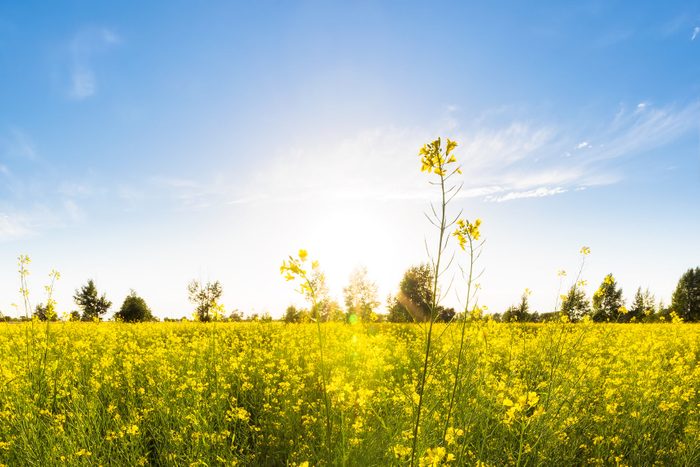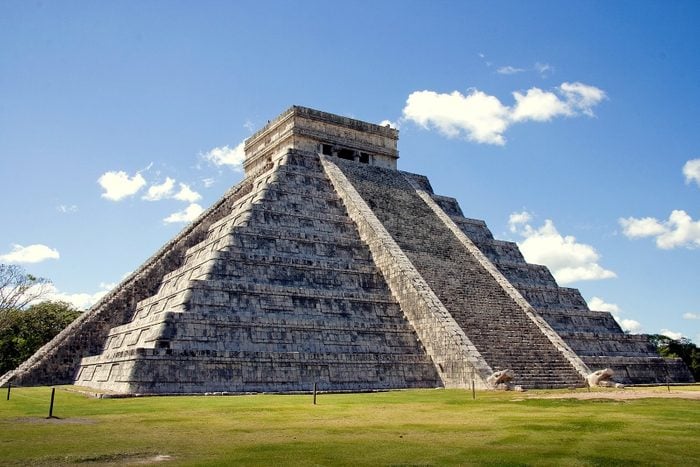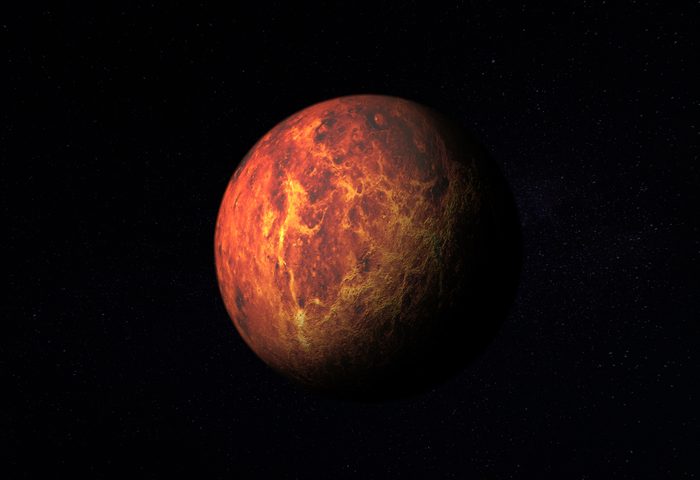What Is the First Day of Spring Called
11 Things You Never Knew About the Spring Equinox
The first day of spring? Well, kind of. The "vernal equinox" happens every year, yet most people don't know what it is, or why it's important. Here's the scientific—and spiritual—scoop.
Every editorial product is independently selected, though we may be compensated or receive an affiliate commission if you buy something through our links. Ratings and prices are accurate and items are in stock as of time of publication.
 Xuanyu Han/Getty Images
Xuanyu Han/Getty Images
What is the spring equinox?
Bring on March 20th, 2021! You may have heard that the spring equinox is the official first day of spring, and it's true that this auspicious event traditionally marked the start of spring for many different cultures, as well as the start of the new year in ancient Indian and Persian calendars. Even today, the spring, or "vernal" equinox is often used to indicate the first day of spring, but what it really signifies is the astronomical start of spring, as opposed to the meteorological one. Meteorological seasons are grouped by months, based on weather and temperature shifts, and meteorologists and climatologists agree that the first real day of spring in the Northern Hemisphere should be March 1st.
So what is the spring equinox? An equinox is the moment in time and space when the sun is positioned directly above the Earth's equator, which happens just twice a year on the vernal and autumnal equinoxes. In March (usually the 20th or 21st), the sun crosses the equator from south to north, bringing warmth and light back to the Northern Hemisphere, and plunging the Southern Hemisphere into its fall and winter darkness. In September (around the 22nd or 23rd), the sun crosses back from south to north, heralding the start of fall in the Northern Hemisphere, and the start of spring in the Southern one.
The word "equinox" comes from the Latin for "equal" and "night," because as the sun crosses the equator (Earth's midline point) the hours of daylight and nighttime are very nearly equal. The equinoxes are the only time when the sun rises directly due East and sets directly due West for everyone on Earth. For more March madness, check out these bizarre facts about the calendar's third month.
 Ibon Bastida/EyeEm/Getty Images
Ibon Bastida/EyeEm/Getty Images
An ancient serpent god
In the ruins of the Maya city Chichén Itzá, in Mexico, crowds gather at the ancient El Castillo pyramid every spring and fall equinox to witness an equinox celebration that dates back to the construction of the pyramid around A.D. 1000. The Maya were skilled astronomers, and the pyramid is dedicated to the feathered serpent god, Quetzalcoatl. At sunset on the equinoxes, the angle of the sun creates shadows that look like a giant snake. The light-and-shadow snake appears to slither down the pyramid steps until it merges with the huge sculpted serpent's head at the bottom. Don't miss these fun facts about the fall equinox.
 Ad Oculos/Shutterstock
Ad Oculos/Shutterstock
A full "Worm Moon"
We all know that spring is a time of renewal and new growth. From the first crocuses and snowdrops emerging to the daffodils and tulips, the new season is what the spring equinox is all about. March showers may bring April flowers, but they also bring worms up and out of the soil. Earthworms typically spend the winter buried deep below the frost line, but the annual spring showers reduce the oxygen in the soil and cause them to burrow their way up to the surface. That's why the first full moon in the month of March is known as the Worm Moon. Get ready for the season with these photos to celebrate the start of spring.
 Vasileios Karafillidis/Shutterstock
Vasileios Karafillidis/Shutterstock
A mysterious egg
What is the spring equinox? Why, a day of magic, of course. Folklore claims that special magnetic or energetic changes on the day of the vernal equinox make it possible to stand a raw egg on its end. As cool as this sounds, it's a myth. You can balance some raw eggs on their end, but you could do it any time of year.
According to the Washington Post, this egg story may stem from Chinese Lunar New Year traditions that have their roots in the Shang Dynasty, which ruled China for nearly six centuries. Legend has it that on the vernal equinox in the year 1600 B.C., a woman named Chien-Ti received a special egg from a heavenly swallow. In a story that bears similarities to Jesus' mother Mary's virgin birth, Chien-Ti, also a virgin, became pregnant. Her child Hsieh went on to found the Shang dynasty, which is how that family explained their divine right to rule. We tested the egg myth ourselves, just to be sure.
 Gianni Dagli Orti/Shutterstock
Gianni Dagli Orti/Shutterstock
The Cybele cult
For a certain group of ancient Romans, the vernal equinox was a day to celebrate the deity Cybele, a goddess closely associated with nature and fertility. A cult sprung up around her, and her festival was celebrated similarly to rituals surrounding Dionysus, god of wine: There were wild parties, dancing, drinking, and sex. Cybele's festival also included a Christmas-like tree ritual, where celebrants would cut down a pine tree and bring it to her shrine, decorating it with flowers and worshiping it as a representative of the goddess. In another interesting twist, Cybele's priests, the Galli, were self-made eunuchs who grew their hair long and dressed as females; during Cybele's festival, they joined in the religious fervor until they collapsed. Check out these modern (and less rambunctious) celebrations of spring around the world.
 Artur Debat/Getty Images
Artur Debat/Getty Images
Other planets have equinoxes, too
It turns out, we're not the only planet that gets to experience an equinox. In fact, every planet in the solar system can have an equinox, as it's when their orbit and tilt, with respect to the sun, results in both hemispheres receiving about the same amount of light. Every planet in our solar system is tilted to varying degrees, so they all get to experience an equinox (with varying lengths of time in between). The closest example is Mars, whose most recent equinox was on April 8th, 2020, bringing on the northern autumn. What is the spring equinox on Mars? It's due to take place on February 7th, 2021. That's one long winter! Saturn has equinoxes too, about every 14.7 years—the next one is slated to take place on May 6th, 2025. Here are 25 astronomy facts you never learned in school.
 Marcel van den Bos/Shutterstock
Marcel van den Bos/Shutterstock
A gateway to hell
In a cemetery on Emanuel Hill, in the tiny town of Stull, Kansas, lies a so-called "gateway to hell," author Mark Moran writes in Weird U.S.: Your Travel Guide to America's Local Legends and Best Kept Secrets . Legend has it that this gateway is one of several places around the world where the devil himself can enter the human world. He can only do it twice a year, and one of those days is the vernal equinox. (Yes, the other is Halloween.) Since the 1970s, people visiting the cemetery on these days report hearing disembodied growling, being grabbed by unseen arms, and experiencing amnesia. Maybe stay away from Kansas in the spring and fall. For more spooky stuff, check out these 13 haunted house mysteries no one can explain.
 TaraPatta/Shutterstock
TaraPatta/Shutterstock
Poisoned waters
In ancient Judaic mythology, there's a claim that the water in springs and rivers becomes unsafe to drink during the vernal and autumnal equinoxes (and the winter and summer solstices too), reports the Times of Israel. The solstices and equinoxes were considered spiritually vulnerable moments when warring supernatural powers might release cosmic poisons into the water. A 12th-century scholar wrote: "The venom falls into the springs and aquifers whose waters flow to the valleys and hills, into every pool of water on the face of the earth, and into the waters inside wooden and stone vessels. The waters will kill all who drink from them at this hour." Fortunately, fridges weren't invented yet, so you might want to keep a couple of bottles in there. Don't miss these things you never knew about the winter solstice, either.
 Maya Kruchankova/Shutterstock
Maya Kruchankova/Shutterstock
The date of Easter
Unlike Thanksgiving or Independence Day, the exact date of Easter changes from year to year. Deciding what day Easter will fall on is a matter of great importance to Christian churches because it celebrates the resurrection of Jesus Christ. It's so important, according to Panos Antsaklis, PhD, a professor at Notre Dame University, that in the 4th century AD, a group of Christian leaders came together to officially decide how to calculate Easter's date. Their decision: Easter is to be celebrated on the first Sunday after the first full moon following the vernal equinox. Here's more on the changing date of Easter Sunday.
 Richard P Long/Shutterstock
Richard P Long/Shutterstock
Mysterious river waves
Waves large and powerful enough to surf on typically only occur in oceans or massive lakes. But during extreme tides—usually after a new or full moon—waves known as "tidal bores" can pop up in rivers. The biggest and most surfable tidal bores take place during the spring and autumn equinoxes. One notable example occurs in a river estuary near Gloucestershire, England. Called the Severn Bore, the wave rolls through every morning for two or three days around the equinox, and surfers from around the world gather to ride it. Maybe being on the water helps with seasonal allergies. Learn the history of spring fever.
 Youshij Yousefzadeh/Shutterstock
Youshij Yousefzadeh/Shutterstock
The Persian New Year
The Persian New Year celebration known as Nowruz kicks off at the vernal equinox and lasts for 13 days. The night of the equinox, Iranian families gather for a holiday meal and count down to the first stroke of their new year with a cheer of "Eide Shoma Mobarak," or "Happy New Year!". The holiday table, called the haft seen, is decorated with seven ceremonial items: An apple representing beauty, vinegar for patience, hyacinth for spring, a sweet pudding for fertility, sprouts representing rebirth, and coins for prosperity. Next, check out these facts you never knew about the summer solstice.
Sources:
- The Washington Post: "Meteorological vs. Astronomical Seasons: Which is more useful?"
- History.com: "Vernal Equinox"
- The Old Farmers' Almanac: "The First Day of Spring 2021: The Spring Equinox"
- The Washington Post: "Spring Starts Sunday: Five myths about the equinox, debunked"
- Mark Moran, author of Weird U.S.: Your Travel Guide to America's Local Legends and Best Kept Secrets
- Bustle.com: "The Weird History of the Spring Equinox"
- Britannica.com: "Great Mother of the Gods"
- Britannica.com: "Galli"
- National Geographic: "What is an equinox?"
- The Times of Israel: "Ancient Fears, Modern Tragedy"
- Panos Antsaklis, PhD: "The Dates of Easter Sunday"
- The Guardian: "Surfers ride the Severn bore"
- NPR: "Nowruz: Persian New Year's Table Celebrates Spring Deliciously"
Originally Published: January 26, 2021
Sign up for articles sent right to your inbox
Enjoy the best stories, advice & jokes delivered right to your inbox!

Subscribe & SAVE Save Up To 84%!
What Is the First Day of Spring Called
Source: https://www.rd.com/list/spring-equinox-facts/
0 Response to "What Is the First Day of Spring Called"
Post a Comment